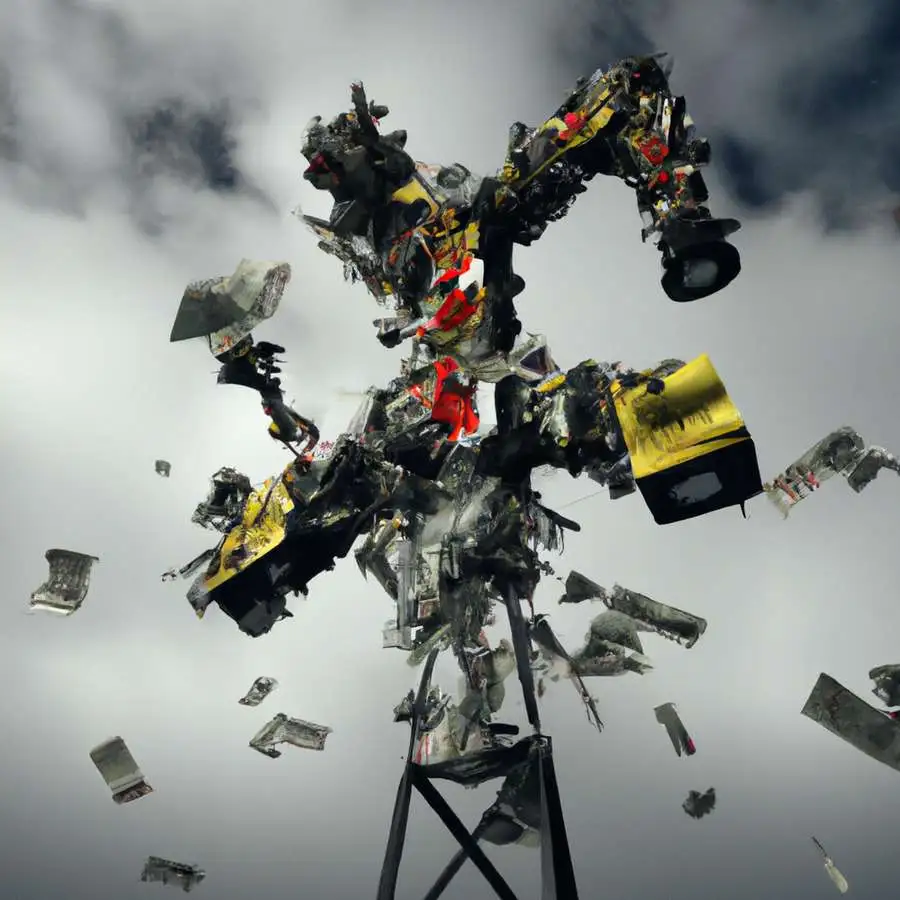Dystopian Literature: A Journey through Dark Imaginations
Introduction: Dystopian Literature
Dystopian literature is a fascinating genre that explores imagined societies set in the future, where oppressive governments, environmental disasters, or technological advancements have brought about a nightmarish world. Through vivid storytelling, writers paint a bleak picture of what our future might look like if we fail to address the challenges of the present. This essay will delve into the historical development of dystopian literature, highlight its defining characteristics, and introduce some famous writers who have contributed to this captivating genre.

Historical Development:
The roots of dystopian literature can be traced back to ancient times, but the genre gained significant popularity during the 20th century. The early dystopian novels, like “We” by Yevgeny Zamyatin (1924) and “Brave New World” by Aldous Huxley (1932), emerged as responses to the technological and political upheavals of their time. The devastation of World War I and the rise of totalitarian regimes sparked concerns about the misuse of power and loss of individuality.
In the mid-20th century, the genre saw its golden era with iconic works such as “1984” by George Orwell (1949) and “Fahrenheit 451” by Ray Bradbury (1953). These novels depicted oppressive surveillance, censorship, and mind control, reflecting the anxieties surrounding the Cold War and the erosion of civil liberties.
Characteristics of Dystopian Literature:
- Bleak and Oppressive Setting: Dystopian worlds are characterized by grim, oppressive, and dehumanizing environments. The setting often reflects a decayed or overly controlled society, where people live in fear and conformity.
- Totalitarian Regimes: Dystopian societies are governed by authoritarian regimes that exert excessive control over the lives of individuals. The government may manipulate information, suppress dissent, and use advanced technologies for surveillance and mind control.
- Loss of Individuality: In these societies, individuality and personal freedom are often suppressed in favor of conformity to the norms imposed by the ruling authorities. Creativity and independent thought may be discouraged or even punishable.
- Rebellion and Resistance: Dystopian literature frequently portrays brave individuals or groups who rebel against the oppressive regime, fighting for freedom and justice. These protagonists become symbols of hope and resistance.
- Exploration of Societal Issues: Dystopian novels serve as cautionary tales, exploring current societal issues and warning against potential consequences if these issues are left unaddressed.
Famous Writers and their Dystopian Works:
- George Orwell: “1984” – A chilling portrayal of a future society under the oppressive rule of Big Brother, where citizens are constantly monitored, and independent thought is forbidden.
- Aldous Huxley: “Brave New World” – Set in a futuristic world where citizens are engineered for specific roles, pleasure is prioritized, and individual emotions are suppressed.
- Ray Bradbury: “Fahrenheit 451” – In a society where books are banned, a fireman tasked with burning books begins to question the system and seeks to preserve knowledge.
- Margaret Atwood: “The Handmaid’s Tale” – Depicts a dystopian society where women are subjugated and used for reproductive purposes, exploring themes of gender and power.
- Suzanne Collins: “The Hunger Games” – Set in a post-apocalyptic world, the story follows a young girl’s struggle against a tyrannical government that forces children to participate in a deadly televised game.
Conclusion: A Journey through Dark Imaginations
Dystopian literature has captivated readers for decades with its thought-provoking themes, cautionary tales, and vivid portrayals of dark societies. Through the lens of these imaginative worlds, we are reminded of the importance of safeguarding our freedom, individuality, and the well-being of our planet. The genre continues to evolve, reflecting the ever-changing concerns and challenges of our times. As we explore the pages of dystopian novels, we are encouraged to ponder the course of humanity and the power we hold in shaping our own destiny.
Reviews of Dystopian Literature
Empty Hearts
“Empty Hearts” by Juli Zeh: A Gripping Dive into a Dystopian Tomorrow Juli Zeh’s “Empty…
The Castle
Unraveling Kafka’s Enigmatic Labyrinth – A Review of “The Castle” In the realm of literature…
The Method
The Dystopian Reality: A Review of “The Method” by Juli Zeh In Juli Zeh’s thought-provoking…
The Trial
Navigating the Labyrinth of Justice: The Trial by Franz Kafka “The Trial” by German-speaking writer…
Brave New World
A Dystopian Masterpiece that stood the test of time: Aldous Huxley’s “Brave New World” Aldous…
Fahrenheit 451
Ray Bradbury, Fahrenheit 451: A Provocative Exploration of a Dystopian Future Ray Bradbury’s Fahrenheit 451:…
Animal Farm
Animal Farm by George Orwell: The Timeless Tale of Power, Betrayal, and Rebellion Quick Summary:…
Burmese Days
George Orwell, Burmese Days: A Provocative Exploration of Imperialism and Prejudice Quick Summary: My Thoughts…
1984 (by George Orwell)
Orwell’s Ominous Vision – The Dystopian Depths of “1984” My Findings from 1984 by George…








